|
text 
Nicola Gess*
Gaining Sovereignty:
On the Figure of the Child in Walter Benjamin’s Writing**
* Freie Universität Berlin
(I thank Joel Golb for translating this article.)
** MLN, Volume 125, Number 3, April 2010 (German Issue), pp. 682-708.
In Walter Benjamin und sein Engel, Gershom Scholem recalls that Benjamin was drawn to the “Welt des Kindes und kindlichen Wesen mit geradezu magischer Gewalt.”[1] And in fact, especially from the mid-1920s onward, his texts are stamped by a clear interest in childhood: in children’s activities and objects, their games, toys, and books, which Benjamin first explores (starting in 1924) in a wide range of reviews, and then (starting in 1931) in reflections conveyed by his own childhood memoirs. This interest is also manifest in both his concern with contemporary literature and in his writing on the philosophy of history formulated in the context of the Passagenwerk.
.... Benjamin was well-informed about work on child psychology and child education published in his time; but with some exceptions, he criticized it sharply.[2] In place of a domestication of the “Kinderseele” through analysis, conceptualization, and educational practice, as proposed in the Kolonialpädagogik[3] he condemns, he advocated an approach that was “nicht psychologisch ..., sondern sachlich” oriented[4]—which is to say not around the “child’s soul” but rather around toys. This approach would involve formulating a physiognomy of the child’s objects and activities that, in its essayistic form, avoid both being used practically and—crucially—any fashionable talk of the child as a “better person”. For in striking contrast to the reformist pedagogy of his age, in Altes Spielzeug Benjamin emphasizes the “grausame, ... groteske und ... grimmige Seite im Kinderleben”, the “Despotische und Entmenschte an Kindern”, their “[E]rdenfern[e]” and “[U]nverfroren[heit].”[5] How are we to understand this?
.... I would like to argue here that in Benjamin’s writing, the child plays a central role in an enchanting/disenchanting—that is, dialectic—treatment of history and of that which is strange—in this way serving as an inspiration for his late Passagenwerk. There and elsewhere, the child functions for Benjamin as a utopian figure. This is, however, not in the sense inherited from Romanticism, of an embodiment of plenitude in harmony with nature, but rather in view of both the “barbaric” and “primitive” tendencies that children display. Their destructive and mimetic potential come together in the games children play, leading dialectically to a gain of sovereignty in which intimacy with history or the strange, analytical destruction and steady new creation mutually specify each other.
The Child as “Barbarian”
As addressed in the satire Neues Kinderspielzeug by Myona (Salomo Friedländer) or Joachim Ringelnatz’s Geheimes Kinderspielbuch,[6] what emerges in this side of a child’s life is joy in destruction and the amorality tied to this, or rather the child’s situation beyond morality, as revealed in games involving burglary, theft, arson, bombing attacks, and murder.[7] But in this mimesis of the world of adults, the child exposes above all the fragility of their moral ideas—and that is certainly the main concern of Friedländer and Ringelnatz. In any event, beyond this satirical and socially critical dimension, the attention Benjamin pays to the child’s destructive pleasure is tied to the disenchantment of the romantic view of childhood practiced by psychoanalysis. For Freud, children are not only subject to the same drives as adults, but live out these drives in relatively undisguised form, since the inhibiting authorities are still undeveloped.[8] For instance, children not only possess an infantile sexuality, which they act out, but are inclined, Freud argues, towards paraphilia—in other words, towards needs and activities connected with suffering of persons or victims. Whereas in Freud’s early theory of drives this destructive form of sexuality can only be understood as a perversion (the child, we read, is “polymorphously perverse”), in the late theory it can be understood as a manifestation of the death drive, whose effects are also manifest in child’s play. Benjamin repeatedly refers to Jenseits des Lustprinzips, where Freud of course develops the concept of the death drive—we find such a reference a few months after publication of Altes Spielzeug. And he does so in connection with child’s play, whose drive towards repetition he understands, with Freud, as an expression of the death drive: “Der dunkle Drang nach Wiederholung ist hier im Spiel kaum minder gewaltig, kaum minder durchtrieben am Werke als in der Liebe der Geschlechtstrieb. Und nicht umsonst hat Freud ein ‘Jenseits des Lustprinzips’ in ihm zu entdecken geglaubt.”[9] If we follow this assumption, then destructive pleasure also emerges in the repetition of child’s play: this not only in Freud’s sense that, through repetition, change is avoided and stasis achieved, or, in Benjamin’s reading, that “erschütterndste Erfahrung” is changed “in Gewohnheit”;[10] but also in the sense that destruction is repetition’s precondition and vice versa. The tower has to first be destroyed before it can be built again, in order to then be again destroyed, and so on. In his text, in the framework of a sublimation of the death drive, Freud also grants it a culture-creating impulse—its counterpart in Benjamin being an emancipative, hence self-empowering moment of the destruction and repetition compulsion. Benjamin explains that the child’s repetition is also a repetition of small victories, in the course of which the surrounding world is actively altered (meaning initially destroyed); and that as something self-initiated, the repetition itself signifies a victory over “unsettling experience,” in the sense of subjecting it to a sense of control.
.... Reflections Benjamin offers three years later in an essay on Karl Kraus point to another possible explanation for his talk of “dehumanized” children. The reflections circle around a related type of “nonhuman” the “Unmensch” Benjamin describes as a “Geschöpf aus Kind und Menschenfresser.”[11] The child here stands (in Benjamin’s reading of Kraus) for an idea of primeval purity, the cannibal or man-eater for a principle of the destruction of the mythic order—a destruction from which modern civilization emerges. In the “Unmensch,” the concepts of original purity and of destruction come together as a necessary purification producing the only possible “Ursprung der Kreatur.”[12]
.... At the same time, something “man-eating” is inherent in the child in this text as well. Cited in Altes Spielzeug, children’s laughter at the “Kehrseiten des Lebens,” a laughter tied to their pleasure at the playful imitation of destruction, here returns as the laughter of a bellicose humanity: “es ist . . . das Lachen des Säuglings, der im Begriff steht, seinen Fuß zum Munde zu führen. So begann die Menschheit vor fünfzehn Jahren von sich zu kosten ... Es ist das Lachen des gesättigten Säuglings. Diese Menschheit hat das alles ‘gefressen.’”[13] A problematic reading of war as the start of a new purification is at work here—a reading shared with other opponents of the Great War such as Benjamin’s friend Ernst Bloch. Two years later, in the essay Erfahrung und Armut, Benjamin returns to this constellation in the context of a “neuen positiven Begriffs des Barbarentums.”[14] Here the Great War has led to a devaluation of experience: “nie sind Erfahrungen gründlicher Lügen gestraft worden als die strategischen durch den Stellungskrieg, die wirtschaftlichen durch die Inflation, die körperlichen durch den Hunger, die sittlichen durch die Machthaber.” The generation emerging from the war has found itself in a landscape “in der nichts unverändert geblieben war ... als der winzige gebrechliche Menschenkörper.” Benjamin compares this “tiny human body” of his contemporaries with a “Neugeborenen in den schmutzigen Windeln dieser Epoche.” But the “poverty of experience” characterizing this situation is not lamented, but rather longed for: individuals participate while “laughing” in the decline and fall of a culture they have experienced as mendacious since the war: “Sie haben das alles ‘gefressen,’ ‘die Kultur’ und den ‘Menschen’ und sie sind übersatt daran geworden und müde.” In sleep they dream of “gänzlich neue[n] sehens- und liebenswerte[n] Geschöpfen” that are, precisely, no longer “menschenähnlich” and, like Russian children, bear “entmenschte” names.[15]
.... Hence, within this constellation, the child is allotted three different attributes. First, children are the mere creatures remaining after the destruction of previous humanity: not only survivors of humanity-devouring war, but themselves devourers of human beings in that they affirm that destruction and drive it even further. For after all, devouring humans is part of their nature. Hence, in comparison with the humanity-devouring order of war, what is present here is not an instrumental but rather a pure form of destruction: one that is only a manifestation of a drive—here both the death drive and the life drive—to the extent that what is at stake is survival of creation. This is the sense in which Benjamin comments on the “Unmensch” as follows: “Er hat sich mit der zerstörenden Seite der Natur solidarisiert. So wie der alte Kreaturbegriff von der Liebe ausging ... geht der neue, der Kreaturbegriff des Unmenschen, vom Fraße aus—indem der Menschenfresser seine Beziehung zum Mitmenschen gleichzeitig mit der Befriedigung des Nahrungstriebs bereinigt.”[16] But once more the question poses itself here of how emancipation from the creaturely compulsion of the drives succeeds. This is shown by Benjamin’s concept of “positive” barbarism.
.... Second, the child is a barbarian in that barbarians are not only stamped by a “poverty of experience” but are driven by just this poverty “von vorn zu beginnen, von Neuem anzufangen”[17]—precisely the outstanding feature of child’s play as formulated by Benjamin in Spielzeug und Spielen: “Das Kind schafft sich die ganze Sache von neuem, fängt noch einmal von vorn an.”[18] Which is to say: not only are children’s games subsumed to the creaturely drive to destroy the old, but also, the destruction opens the possibility of subsequent production. This is not simply a matter of living out a repetition compulsion; rather, the repetition is applied in such a way that potentially new concepts emerge from its repeatedly fresh start. The concepts that the barbarian child creates are by no means mythic-organic (such concepts are themselves “devoured”); instead, the child is constructor of the “willkürlich Konstruktivem,”[19] aware of the need to constantly destroy the old for the sake of that new beginning. What emerges here in terms of linguistic philosophy is a proximity to Benjamin’s idea of the allegorist, which we will consider later. In addition, Benjamin’s reflections are strikingly close to Nietzsche’s well-known idea of child’s play, oriented towards Heraclites, as the symbol of a lifetime unfolding in cycles, or of eternity: “Ein Werden und Vergehen, ein Bauen und Zerstören, ohne jede moralische Zurechnung, in ewig gleicher Unschuld, hat in dieser Welt allein das Spiel des Künstlers und des Kindes. Und so, wie das Kind und der Künstler spielt, spielt das ewig lebendige Feuer, baut auf und zerstört, in Unschuld—und dieses Spiel spielt der Aeon mit sich.”[20]
.... Third, these children are the new creatures emerging from the barbarian’s arbitrary constructions. They no longer resemble human beings—they are “ent-menscht”—to the extent they postulate a destruction of previous ideas of the “Menschliche[n] und [vom] Mensch.”[21] In the paralipomena to the Kraus essay, Benjamin also refers to the new creature overcoming the old “mythischen Menschen” as an “Engel.”[22] If we now conceive of the child’s three dimensions together—the child as “Kreatur,” barbarian, and angel—then why the child is described in that text not only as a “Verklärung der Kreatur” but also as a “Geschöpf aus Menschenfresser und Engel”[23] retrospectively becomes clear. Not the man-eater but the child stands in the “Herzen des Unmenschen” because the child not only offers ideas of the pure and primeval, but also their linkage with destruction—in this way already anticipating the purification and with it the angel.[24]
.... Hence, the following conceptual figure emerges against the backdrop of Erfahrung und Armut: the destruction of the mythic order and with it the mythic human being is the precondition for the creature outlasting both, then being able, as a barbarian, to construct a new angel, who as an “Unmensch” is committed to the principle of purification as destruction that enables new production. This interweaving of destruction and production is, however, hardly manifest in either the Kraus essay or in Der destruktive Charakter written around the same time; the dynamic at work thus seems to call for fresh consideration. In the Kraus essay Benjamin breaks off the movement in the creaturely stage. The concern here is only with living on, not with the potential construction of something new on that basis: the “Hoffnung ..., dass einiges aus diesem Zeitraum überdauert” lies in the “Kraft” of “Reinigung.”[25] “[R]eale[r] Humanismus” is here to be found only in allowing the creature to live on through destruction of the extant order. Hence the “Unmensch” as angel is not the new creature, but the one who carries out the purification. Only the indication that the purification stands at the “Ursprung der Kreatur” and the reference to the constellation (“Reim”) in which the ruins (“Name”) are brought anew can be read in the direction of new construction;[26] the reference to ruins here again evokes Benjamin’s concept of allegory. In Der destruktive Charakter, there is even more emphasis on destruction and not new construction being in play here: “Dem destruktiven Charakter schwebt kein Bild vor. Er hat wenig Bedürfnisse, und das wäre sein geringstes: zu wissen, was an Stelle des Zerstörten tritt.”[27] To be sure, here as well, there is a hint at the possibility of new construction, in the metaphor of the path that passes through the ruins and that the destructive character wishes to open up through the destruction.[28]
.... In their denial of just that new construction, both texts point back to the markedly earlier text Zur Kritik der Gewalt. In that essay, Benjamin develops the idea of a non-instrumental form of violence that dis-places—ent-setzt—the violence of law, grounded as it is in myth, without at the same time replacing it with something new. It pursues no external goals, but simply manifests the rage of the dis-placing authority. Structurally, this violence is related to that of children in that their destruction likewise has no goal but is the manifestation of a drive and simultaneously emancipation from it—in part because it is aimed at an antecedent positing violence (the violence inherent in all acts of “Setzung”, in the Kraus essay very concretely that of the educator). For this reason, in Zur Kritik der Gewalt, non-instrumental violence is not only tied to anarchy, but anarchy at the same time to the child, in Benjamin’s reference in passing to “kindlicher Anarchie.”[29] In the Kraus essay, anarchy itself also returns in order to characterize the “Unmensch” who, like non-instrumental violence, destroys the orders of myth.
.... Taken together, the moments in both texts suggesting new construction can be read as indicating that the purification is more than simple destruction in that it creates a possibility of a new beginning, without, however, indicating what form this is to take. What is clear is only that no new “Setzung” is to take place; hence the two texts refrain from advice: “Zunächst, für einen Augenblick zumindest, der leere Raum, der Platz, wo das Ding gestanden, das Opfer gelebt hat. Es wird sich schon einer finden, der ihn braucht, ohne ihn einzunehmen.”[30] This reading is in harmony with Erfahrung und Armut in an important respect: here as well, the new constructions, clearly underscored in contrast to the other text, are presented as provisional. They are “willkürlich” and improvised, hence could be otherwise constructed; and “nichts setzt sich an ihnen fest,” meaning they cannot express any duration.[31] Correspondingly, in the Kraus essay the angel is of the sort that, hardly created, “in Nichts zergeh[t].”[32]
.... The idea of a destruction enabling new production that Benjamin connects to the figure of the child stands in a broader context. Benjamin’s discussion of the child’s “other” side, I would like to argue, reflects a specific concept of liberation, namely, liberation as a gaining of sovereignty. The crux of this idea is the dialectical transformation of mimesis as constraint—as marking, for Benjamin, the so-called “primitive”—to mimesis as cunning, play, and “bricolage”—concepts Benjamin draws from the figure of the child, taken up from there into his linguistic philosophy, his philosophy of history, and his way of writing. The concepts are also tied to a dialectic exit from the dilemma of the colonizing treatment of the child associated by Benjamin with the “colonial pedagogy” of his age: either the strange is domesticated and thus extinguished, or succumbed to, with a concomitant vanishing of what has been one’s own. In face of that dilemma, with help of the figure of the child, Benjamin develops the idea of a sovereignty of what is one’s own acquired through mimesis of the strange. In his later writing, this idea also emerges in his discussion of the proper approach to history and, tied to this, in his approach to the question of revolutionary action as well.
The Child as “Primitive”
In Lehre vom Ähnlichen, which Benjamin wrote in connection with the first essay of Berliner Kindheit,[33] he proposes a correspondence between children’s play as the ontogenetic school of the mimetic faculty and human phylogeny, which is stamped by this faculty and its transformation. In this way drawing up alongside the child, who plays not only shopkeeper or teacher but also train-engine and windmill, are “d[ie] alten Völker oder auch d[ie] Primitiven,” whose world is full of “magische Korrespondenzen.” Like pre-historical human beings, children thus stand under the “Zwan(g), ähnlich zu werden und sich zu verhalten,”[34] as expressed in their transformation into the objects and words of their games. This is simply the best-known of many passages in which Benjamin draws connections between the child and the “primitive.”[35] But before we follow this argument, we need to clarify what he means when he uses that term.
.... In referring to the “primitive,” Benjamin is in fact evoking a particular concept that was extremely influential at the time: that of an emphatically “other” culture standing at the start of its phylogenic development and set in sharp contrast with European culture, for which the cultures of colonized peoples had to serve as a sign. One of the most important oppositions at work here was with the putatively “other” thinking of the “primitive,” signified according to choice as magical, mythical, or mystical, but also as pre-logical, fantastical, or egocentric,[36] that some prominent ethnologists derived from “animism.” These qualities of the “primitive” play a significant role in Benjamin’s interest in ethnological discourse. According to Scholem, it can be traced back to 1916, when Benjamin began to explore animism and pre-animism in the context of his work on myth.[37] One author who supplied basic concepts here was Karl Theodor Preuß, a then wellknown ethnologist: Benjamin “benutzte öfters dessen Ausführungen über den Präanimismus. Das brachte uns auf Gespenster und deren Rolle im präanimistischen Zeitalter.”[38] In the theories of pre-animism considered advanced in the early twentieth century, the first beginnings of religion are traced not to a belief in souls (which Tylor and Wundt among others see as animism’s origins), but to a belief in an unspecified, omnipresent magical force. Preuß understands pre-animism in this sense as well: “[es] gibt sichere Nachrichten, daß eine gewisse Kraft, eine Zauberkraft in ihnen [den Naturobjekten—NG] wirksam gedacht wird, die nachweisbar mit den Elementen nichts zu tun hat, aus denen sich der sogenannte Seelenbegriff gebildet hat, nämlich das melanesische mana, das irokesische orenda usw.”[39] Working with this assumption, Preuß has a pre-animistic age of magic, characterized by belief in a general magical force, preceding the age of myth, determined by belief in gods.
.... Benjamin follows Preuß in two respects. First, he accepts the existence of a pre-mythic age. In Anthropologie,[40] a sketch written in 1918, he outlines a historical schema in which such an age, marked by belief in ghosts (we will return to this below), is superseded by a mythic age marked by belief in demons and by both law and positing language. In turn this age is superseded by that of justice, which Benjamin also names the age of revelation, in which, as a revolution of the demonic age, the purely dis-placing—which is to say, not newly positing—divine violence from Kritik der Gewalt can be located. However, the relation of the spectral age to justice is here conceived not as revolutionary dissolution but as “Aufhebung.” This distinction is crucial both for understanding the importance that the pre-mythic age has for Benjamin and for central categories of his thinking such as rescue and awakening: in a dialectic turn, justice rescues elements of the spectral into the new age, but with a decisive modification. The difference is between compulsion and freedom: the turn here involves mimetic compulsion and the drive to destruction that is the gain of sovereignty achieved in the passage through mimesis and potentially expressed as both analytic destruction and open production.
.... Second, Benjamin follows Preuß in accepting the existence of preanimism and ascribing the “primitive” with a belief in a mysterious magical force that, however, he more closely describes, in contrast to Preuß and other theorists of pre-animism. The magical force with which Benjamin sees the so-called “primitive” world imbued is a “mimetische Kraft.”[41] He writes, for example, that “das mimetische Genie“ was “eine lebensbestimmende Kraft der Alten,” and that in line with the correspondence between phylogeny and ontogeny, the “Vollbesitz dieser Gabe” has to also be granted the newly born.[42] In another context, he speaks similarly of the “Gabe der Mimesis, die der Menschheit in ihren frühen Zeiten eigen war und heute nur noch im Kinde ungebrochen wirkt.”[43]
.... For Benjamin, then, the world of the “primitive” is stamped by an omnipresent “mimetic force” of whose “objektiv[en] [V]orhanden[ sein]”[44] he is convinced, in contrast to Preuß. It would take us too far afield to explore the range of refinements of Benjamin’s mimetic theory; but a few of the theory’s features are important for the present discussion. First, for Benjamin mimetic force is the grounding for a “magische Gemeinschaft der Materie,”[45] understandable, as Doris Fittler explains, as a proto-“genetischer Code” producing “Verwandtschaftsähnlichkeit” in nature: the similarity of all with all rests on a “begrenzten Vorrat an Grundelemente, Merkmalen und Eigenschaften . . . Sie sind nur die Varianten, Mutationen und Metamorphosen ein und desselben Fundus.”[46] Second, human beings are incorporated into this “community of material.” At the same time, in their case “mimetic force” is expressed not biologically but culturally, actively conforming, through both the process of “similarizing” and its product, to an environment perceived as stamped by similitude. They thus possess a “mimetisches Vermögen” involving both the perception and production of similarities.[47] In distinction to the similitude at work in the “community of material,” the similitude emerging from the similarizing process is not always already given; rather, it is the product of an active capacity for resemblance, that as such already presumes difference. Considered against the backdrop of the ethnological discourse of the 1920s, this is precisely the difference between the participation that Lévy-Bruhl conceives as always already constituted and the association assumed by English and some German ethnologists to be the basis of “primitive” thought.
.... Fittler reads the similarizing act as an “Antwort” to the “Mitteilung der Materie in ihrer magischen Gemeinschaft,”[48] whose “Gegenstand und zugleich Vollzug” is similarity.[49] For Benjamin writes: “Die natürlichen Korrespondenzen aber erhalten die entscheidende Bedeutung erst im Licht der Überlegung, dass sie alle, grundsätzlich, Stimulantien und Erwecker jenes mimetischen Vermögens sind, welches im Menschen ihnen Antwort gibt.”[50] However, whether this implies a “Kommunikationsakt”[51] appears questionable because of the imperative nature of the communication and the compulsory nature of the response. Benjamin speaks, after all, of the “ehemals gewaltigen Zwang, ähnlich zu werden und sich zu verhalten” [italics mine].[52] The “Vermögen” is here still in a certain way actually manifest as a drive. Correspondingly, Benjamin elsewhere also denies the originality of the human production of similarity: “Man muß, grundsätzlich, damit rechnen, dass Vorgänge am Himmel von früher Lebenden ... nachahmbar waren: ja, dass diese Nachahmbarkeit die Anweisung enthielt, eine vorhandene Ähnlichkeit zu handhaben.”[53] Hence in the strict sense what is fore grounded here is not the production of similarity but only “treatment” [Handhabung] of it, as something already existing. Likewise, the indication that in making things similar, human beings (merely) mediate [vermitteln] the similarity between things itself points to a realization of what is already extant being more at work here than any new production.[54] Nevertheless, in both cases the inverse tendency is already implied. For neither stars nor clouds have fixed forms; their mimetic act would only prevail for the moment, or else consist precisely of the transformation of their form.[55] The question that thus emerges is how the mimetic capacity shifts from one side to the other in the course of its phylogenic and ontogenic transformation, as underscored by Benjamin in Lehre vom Ähnlichen and Über das mimetische Vermögen—that is, how mimetic compulsion no longer stands at the forefront, but rather mimesis-inspired new production.
.... But first let us consider the connecting links Benjamin draws—in this respect fully following the developmental psychologists of his time[56]—between the child and the “primitive.”[57] In Berliner Kindheit, the links Benjamin generates are numerous, both structurally and in terms of motif.[58] The places children frequent, forgotten by grownups, are often “Wildnis.”[59] Shamans are often encountered there,[60] masquerades[61] and demons,[62] sacred animals,[63] ghosts and spirits,[64] goddesses[65] and temples.[66] In “Das Karussell,” the child traveling through “Urwald” and surrounded by “Eingeborenen” is correspondingly attributed with a knowledge of the “ewige Wiederkehr aller Dinge,” the millennial (“vor Jahrtausenden”) and very recent past (“eben erst”) thus being brought together.[67]
.... Furthermore, the child engages in magical thinking: a belief in supernatural beings, the practice of magic rites, figurative thinking as manifest in the revitalization of lexicalized metaphors and retranslation of unknown words and names into images. For Benjamin, children reveal a different sense of causation when they assume they own all of something (e.g., Berlin’s Peacock’s Island) by owning part of it (e.g., a peacock’s feather), or that similarity is an indication of belonging together. (For instance: the waiting areas for hackneys are provinces of the inner courtyard because of the similar rooting of trees in both loci.[68]) Likewise with the omni-causality involved when peripheral phenomena are seen as not appearing as they are by chance, but as pointing to connections needing to be discovered.[69] In “Schmetterlingsjagd,” the child’s animism is also strongly present. Wind and scents, foliage and sun, it is asserted, have plotted to curb the flight of the butterfly. And the butterfly is supplied with feelings—but this is standing in connection with the identity exchange between butterfly and hunter: “Es begann die alte Jägersatzung zwischen uns zu herrschen: je mehr ich selbst in allen Fibern mich dem Tier anschmiegte, je falterhafter ich im Innern wurde, desto mehr nahm dieser Schmetterling in Tun und Lassen die Farbe menschlicher Entschließung an.”[70]
.... In Berliner Kindheit, the child’s turning into a thing or animal is discussed repeatedly—more so than the humanization of the world of things and animals. In this transformative process, what is first of all clear is that the borders of the child’s identity have not yet been firmly fixed. Piaget coined the term “realism” in this respect: to the child, subjective phenomena are just as “real” as objective ones; the distinction between the ego and the outer world is still blurred. Benjamin accurately depicts this dimension of being a child as a blurring of the borders between dream, fantasy, and reality, and as an interweaving of the expression of a wish and its fulfilment. The concept of participation developed by Lévy-Bruhl and taken up by Piaget does seem to offer another good basis for understanding the childhood way of making things similar. Within that conceptual framework, children transform themselves into their counterparts in the same way that wind and sun command the butterfly and that butterflies and flowers communicate: because they participate with each other, and this with the help of “spirits” and “demons” whose traces the child gets wind of in “Unordentliches Kind” from Einbahnstraße, and which can enter into him as in “Schmetterlingsjagd” and “Verstecke.”[71] But within the framework of Benjamin’s terminology, the similarizing process is best derived from children’s “mimetic faculty,” through which they react to the “mimetic force” working in things and themselves, and that always renders children and things related.
.... Magical thinking is activated on the levels of both motif and structure in Benjamin’s book; it serves as its aesthetic principle. I will here offer two examples: in the book, the child’s thinking is stamped by associations based on similarities or simultaneities. For the child, places like Westerland and Athens become colonies of the location “Blumeshof 12,” because the grandmother who lives there sends postcards from those places.[72] Many pieces in Berliner Kindheit function structurally according to the same principle. “Zwei Blechkapellen,” for instance, jumps from the description of a stroll down the Lästerallee to recreation on the Rousseau-Island. The only ties between the two scenes are brass bands playing in both places.[73] The same thing applies to the archaic principle of repetition that Benjamin sees as ruling the entire world of children’s games. Such repetition, he explains, “[regiert die ganze Welt der Spiele]. Wir wissen, daß sie dem Kind die Seele des Spiels ist; dass nichts es mehr beglückt, als ‘noch einmal.’”[74] In Berliner Kindheit, this observation is confirmed in the small child’s tireless game with the stocking, metamorphosis being the key to its fascination.[75] Transferred to the structural level, this means that certain themes repeat themselves and there is no development, but rather a circling around the fascination of remembered childhood. It is thus only consistent that Benjamin could never decide on a definite order for the chapters and that the editors have disagreed about this question. The principle of repetition is manifest on the level of the writing process as well, with Benjamin repeatedly rewriting the various texts in the book—not necessarily adding new material but altering what was already there.[76] This procedure, it would seem, also corresponds to the principle of “beginning again from the start” that Benjamin discovers at the heart of children’s games.
.... In this manner, Benjamin “nestles up” [anschmiegen] to the child he is recalling. And as with the child and butterfly, a double transformation takes place here: he affirms the child’s perspective; at the same time, the child he recalls becomes an adult in that he is always influenced by the adult ego. This intermeshing is evident in, among other things, the narrative perspective, which fluctuates between a child-like first-person voice that simply recounts what takes place and an adult first-person voice that comments on it.[77] This can be clarified by a look at Benjamin’s approach to the personifications translating the child’s animism into language. In “Blumeshof 12,” the text leaps from an explanation of the ambivalent feelings visitors receive from the 1870s fixtures to a description of the stairwell’s menacing activities (a goblin—“Alp”—that transfixes the child), to an explanation of this event as a dream.[78] In “Wintermorgen,” belated distancing from the personification is absent. The flame “sieht ... zu mir hin,” we read—any reference to a child’s (mis)perception is absent. If in many pieces the first-person voice retreats behind an authorial narrator and his main character, “the child,” this movement is by no means tied to a distancing from the childlike perspective: “Das Kind, das hinter der Portiere steht, wird selbst . . . zum Gespenst” [italics mine].[79] Once again a distancing from the law of participation emerges in this fluctuation of perspectives: in contrast to the participative idea, the idea of similarization is grounded in a previous idea of separation; for this reason, what is here at the forefront is not an always already given participatory process but the human being’s growing similarization to the surrounding world of animals and things. At the same time, this involves an addressing, already, of the perspective of someone who only recollects the magical thinking, and hence can only conceive participation as such similarization.
Dialectic Turn
But participation not only needs to be distinguished from similarization; the “primitive” similarizing process also needs to be distinguished from that of the child. This difference is captured in the concept of play, in its double displacement from compulsion on the one hand, and illusion on the other. Benjamin is here concerned with the dialectic shift from mimesis as a sign of powerlessness to mimesis as an instrument of self-empowerment.[80] In many situations in Berliner Kindheit, the child faces the threat of encountering a “magischer Bann,” a state pointing to the pre-animistic age of ghosts and their relatives. In such situations, these beings surface and threaten the child’s autonomy, as in the above-mentioned episode of the “Alp”; they most often surface in dreams (cf. “Alptraum,” Eng. “nightmare”)—a pointer in Benjamin’s text to their pre-mythic origin. Relevant in this context is Scholem’s recollection that in the period when Benjamin was thinking about the pre-mythic age of ghosts, he often spoke of children’s dreams in which ghosts carried out their mischief. In Über das Grauen Benjamin links the appearance of ghosts to a “Versunkenheit . . . in Fremdes”[81] that can be understood as a “primitive” form of the mimetic faculty. This is, according to Benjamin, a condition in which the human being’s spirit is absent, and with it in a sense the body, which as the spirit’s counter-pole is also its abode and expression, thus now being rendered empty and functionless.[82] The simple, spiritless body falls behind—the “Unter-Leiblichkeit” ascribed to the spectral in the Anthropologie schema can be understood in this manner. Benjamin defines the ghostly as this “depotenzierter Leib” confronting the human being as his uncanny double. Those succumbing to strangeness, then, supply themselves with ghosts. We see here that the “primitive” creation of similitude tends to develop into a state of identity; or that the spectral characterizing the pre-mythic age can be understood as a result of that “primitive” process, which amounts to having lost, or rather never having gained, both what is one’s own and what is alien at once. Inversely, liberation from ghosts and their relatives is aimed at constituting what is one’s own while passing through the strange, thus in the end doing more justice to the strange as well. This liberation is what is at stake for the child, or rather: for Benjamin, with play remaining “immer Befreiung,”[83] children always already themselves exist in the mode of liberation.
.... This mode is especially manifest in “Schmetterlingsjagd.” “Ohnmächtig” in face of natural aggregations, the child assimilates himself to the butterfly, thus placing his “Menschendasein” at risk.[84] But despite the danger, this procedure is the only way to learn the “Gesetze” of the “fremden Sprache” of nature. The butterfly’s behavior will only become predictable to the child through this acquired knowledge; which will thus allow him to capture the insect. Initial powerlessness thus faces “Zuversicht” in one’s own capacities at the end. In “Verstecke,” as well, the assimilative process is initially tied to the child’s powerlessness. He hides in the “Stoffwelt” and assimilates himself to it, thus obeying a “Dämon” rather than initiating his own transformation. Correspondingly, he runs the danger of never being able to free himself from his change: “Wer mich entdeckte, konnte mich als Götzen unterm Tisch erstarren machen, für immer als Gespenst in die Gardine mich verweben, auf Lebenszeit mich in die schwere Tür bannen.” But here as well, the opposite is what occurs in the end. The child takes on the “Kampf mit dem Dämon,” ejecting him from himself “mit einem Schrei der Selbstbefreiung.” In this way he converts the situation he faces into a self-liberating process he cannot get enough of (“Darum wurde ich den Kampf mit dem Dämon nicht müde”). The process culminates in a transforming of “magische Erfahrung” into “Wissenschaft”; having become intimate with the apartment through similitude, the child is soon able to “entzaubern” it as its “Ingenieur.”[85] That for Benjamin mimesis has a dimension of self-empowerment is also shown in his attributing it (in a text on Brecht) not to empathy but to astonishment, since antiquity conceived (in Gr. as thaumzein) as a spur to seeking knowledge.[86] Hence the assimilative process stands in the service of that search and thus to the subject’s empowerment. The process’s flipside is thus the hunter’s “Mordlust,” the trace of “Zerstörung . . . und Gewalt” he leaves behind him.[87] But what is at work here is an incorporative form of destruction—one built on mimesis. The proximity of a “man-eating” destructive pleasure is striking here; it is confirmed when in a radio-speech on Kinderliteratur Benjamin remarks, regarding “Verschlingen” of books as their “[Z]ersetz[en] und [Z]erstör[en],” that children do not read empathically but “einverleibend:” in the end, in entering into what is read, they are concerned with “uns selber zu mehren,” reading standing in the most intimate relation “zu ihrem Wachstum und ihrer Macht.”[88]
.... Playing is thus always already liberation, since starting from a compulsion born of necessity, producing similarity develops into a trick with whose help children assert themselves in the world. Within the similarizing, they have recognized how the environment functions; they have thus gained power over it and themselves, experiencing themselves, the cognizant subjects, as apart from that which they know. In the repetitions of play, they repeatedly savor the pleasures this victory offers.
.... As liberation from a “spell,” similarizing is related to cunning; indeed, it can be understood as a strategy of cunning, since it does not work through force but fooling the opponent.[89] In his reflections on the fairy tale, Benjamin repeatedly emphasizes the cunning of the fairy-tale hero as a strategy—even superior to the “divine violence” in Kritik der Gewalt and the expiation offered by the tragic hero— for overcoming myth. He thus writes as follows in Der Erzähler: “Das Märchen gibt uns Kunde von den frühesten Veranstaltungen, die die Menschheit getroffen hat, um den Alp, den der Mythos auf ihre Brust gelegt hatte, abzuschütteln. . . . Das Ratsamste, so hat das Märchen vor Zeiten die Menschheit gelehrt, und so lehrt es noch heute die Kinder ist, den Gewalten der mythischen Welt mit List und Übermut zu begegnen.”[90] Benjamin attributes this strategy to the child from the start. Seeing the fairy tale as centered on nature’s “Komplizität [der Natur] mit dem befreiten Menschen,” he thus establishes such complicity between animals and the “Märchenkinde”; likewise, in his essay on Robert Walser he speaks of the “kindlichen Adel” of fairy tale figures; and in his essay on Kafka he signifies the cunning of the fairy tale hero as, with Kafka, a “kindische[s] Mittel zur Rettung.”[91] Now if Benjamin names that hero’s cunning as the “most advisable” means of countering myth, then the latter text suggests a reason why such cunning is considered superior: namely, it is not applied here against forms of mythic violence that are already in effect, but rather against myth’s enticement to redemption from an amorphous pre-historical world. Hence the childish cunning of the fairy tale hero functions here as both resistance to the temptations of myth and as an alternative exit from the spectral sphere. It draws its superiority from the non-relationality of its structure to mythic violence; it is not the disposal of a mythic positing, or the expiation of a mythic guilt. In this sense, it alone (and not divine violence or tragic expiation) follows the dialectic logic of magic and disenchantment to which Benjamin repeatedly returns. He thus speaks of the “befreienden Zauber, über den das Märchen verfügt.”[92]
.... If we think of liberating similarizing as cunning, then the cunning’s main feature is precisely not that the similarizing is only illusorily undertaken. For this might not at all be the case. Rather, the main feature is that children determine the similarizing, in other words that they can independently begin it or at least end it. In the similarizing process, they become the sovereign recipients of the strange, their similarizing thus simultaneously being a process of liberation. And only as such—which is to say as disposal of a compulsion—can the process be understood as play. But this means that it can only be understood as play retroactively: at the point, that is, when it has revealed its emancipative nature.
.... Children’s sovereignty is expressed in their approach to the material with which they play—an approach constituting what Levi-Strauss termed “bricolage.”[93] For Lévi-Strauss, magical thinking is a “science du concret” proceeding according to the principle of tinkering:
Et, de nos jours, le bricoleur reste celui qui oeuvre de ses mains, en utilisant des moyens détournés par comparaison avec ceux de l’homme de l’art. Or, le propre de la pensée mythique est de s’exprimer ŕ l’aide d’un répertoire dont la composition est hétéroclite et qui, bien qu’étendu, reste tout de męme limité; pourtant, il faut qu’elle s’en serve, quelle que soit la tâche qu’elle s’assigne, car elle n’a rien d’autre sous la main. Elle apparaît ainsi comme une sorte de bricolage intellectuel, ce qui explique les relations qu’on observe entre les deux.[94]
The “bricolage” at work here follows the following formula: “les signifiés se changent en signifiants, et inversement.”[95] For the “bricoleur” does not use his materials in the old sense, rather applying past ends as means or finding new ends in past means.[96]
.... Benjamin repeatedly describes children as collectors of fragments and junk, and as tinkerers, who put together a new world of things from what they have collected.[97] He sees childlike collecting and tinkering as having a threefold significance. In the first place, childlike collectors turn their faces to the world of things.[98] This means that here the non-instrumental access to things distinguishing the collector allows them to tell their stories and show their potential for transformation. Benjamin thus names collectors “magicians,” assigning them in a number of contexts to the mythic age, for example, by standing under the law of fate or possessing a conserving—in opposition to a destructive—nature.[99] In the second place, precisely because in this manner they have access to the “magic” of things, collectors are responsible for “disenchanting” these things as tinkerers.[100] The movement at work here is the above-described movement of liberating mimesis. For this reason Benjamin also writes that for children, found things are like triumphs: the collector initially fully identifies with the things, in order to then tear them, as a tinkerer, out of their old contexts and place them in new ones. This is connected with, in the third place, an “Erneuerung des Daseins”[101] that Benjamin sees tinkering as serving. The child possesses a number of renewal procedures; tinkering is only one of them. What is involved here is first discovering the “old world” in its magic, in order, once it is taken apart, to put it together anew and thus “renew” it.[102] Here the relationship with barbarism, but also the difference from it, becomes apparent: this is a renewal presuming not only a destruction but first of all an intimate assimilation to things, and that while not being aimed at a restoring of the identical, is also not aimed at something entirely new, but rather at transformation. This transformed material is defined neither by Benjamin nor the child, but remains variable and non-positing, as both a “Geschöpf seliger Willkür” and opposition to the “Zensur des Sinns.”[103]
.... What from an ethnological viewpoint can be described as “bricolage,” can be described from the viewpoint of (Benjamin’s) linguistic philosophy as allegory. As suggested, the tinkerer corresponds to the allegorist in that the latter as well “[die Dinge] aus ihrem Zusammenhang löst und ... es ... seinem Tiefsinn [überläßt], ihre Bedeutung aufzuhellen.”[104] Just as the procedure of “bricolage” faces that of mimesis—each, however, only being able to unfold its sensibility and productivity by passing through the other—allegory faces symbol, their mutual passage—and this can only be touched on cursorily—captured by Benjamin in the concept of gestural language: a language that is both motivated by its object and fixed by the speaker. In Programm eines proletarischen Kindertheaters he correspondingly describes the gesture as a meshing of reception and creation, capturing the process in physiological terms: “die aufnehmende Innervation der Sehmuskeln [wird] in die schöpferische Innervation der Hand überführt. Schöpferische Innervation in exaktem Zusammenhang mit der rezeptiven ist jede kindliche Geste.”[105]
.... “Bricolage” forms the opposition of sovereign children’s play not to compulsion but to illusion [Schein]. In a note to the second version of Das Kunstwerk im Zeitalter seiner technischen Reproduzierbarkeit, Benjamin speaks of mimesis having two sides: that of “Schein” and that of “Spiel.” By play, he here understands the “Spiel-Raum” as a space for “Experimente.”[106] His examples for this stem from the new medium of film. Within this medium, actors no longer imitate; their main concern is no longer creating illusion. Rather, their natural behaviour is chopped up by the director and film technology into moments that are then reassembled. The director and film technology experiment, as it were, with the material that actors place at their disposal. In the context of this new procedure, children can be understood, then, as directors of their own play-material—which includes, potentially, their own metamorphosis—rather than as beings who transform themselves into that material. Benjamin accordingly describes children not as playing in but as directing their own stories.[107]
.... This approach again points to a linkage with contemporary developmental psychology. Most of its representatives ground the child’s animism and transformations in association, in this respect being aligned with Benjamin’s assumption of similarizing (as opposed to participation). At the same time, this poses a particular question for them: what is the status of illusion [Täuschung] in this form of childhood behaviour? Do children deceive themselves concerning the reality of their productions, or do they know that simple illusion is at play here, or do they find themselves in a middle position of conscious self-deception? Developmental psychologists consistently raise the question of play in such discussions—this as the locus where illusion, whatever its status, can be legitimately engaged in. Now Benjamin’s position vis-ŕ-vis this question is to the effect that childhood similarizing is precisely not to be understood in relation to the illusion [Täuschung] of play but rather, on the one hand, in view of the sovereignty the child gains over the illusion; and, on the other hand, in view of the non-illusion [Nicht-Schein] of the sovereign handling of the play material. In distinction to the developmental psychologists, Benjamin thus assumes a dialectic shift in the child’s magical thinking, after which the question of illusion, regardless of whether the illusion has been believed in or not, becomes obsolete. Benjamin’s insight is that children’s sovereignty is decided not at all by the question of illusion, but only by that of whether or not they have acted as directors (even of believed-in illusion). But only when they do so can play actually be play (that is, liberation). And as such, it is always located in the sphere of non-illusion [Nicht-Schein]. In line with this argument, Benjamin also underscores that the fairy tale-reading child is not concerned with identifying with the hero, the child’s narcissism, “kindliche Überlegenheit” here rather playing the central role.[108] Namely, the child operates “so souverän und unbefangen [mit Märchenstoffen], wie mit Stofffetzen und Bausteinen.” The child does not sink (or at least not lastingly) into the fairy tale world, but uses it as material for his own constructions: “In Märchenmotiven baut es seine Welt auf.”[109] In this manner, children once again confirm themselves as sovereigns.
Conclusion
The centrality of the idea of sovereignty in Benjamin’s understanding of the figure of the child is confirmed in many texts. Berliner Kindheit offers a description of how the child “überwacht” his animistic fingerplay, and does so with “Macht”; and how, emerging from powerlessness, the animation of a bicycle’s handlebar (its “eigener Wille”) succumbs in the end to the child’s “Hausmacht” over the landscape opened up with the bicycle. And in “Das Karussell,” the child reigns “als treuer Herrscher über einer Welt, die ihm gehört.”[110] But Benjamin in fact most fully lays out his theory of the playing child as sovereign in two less noticed texts. One of these is Grünende Anfangsgründe, a review of play-primers by Tom Seidmann- (Martha-Gertrud) Freud. As a special accomplishment of the primers, Benjamin here emphasizes that the author leaves enough space for the “Kommandogewalt” that is so decisive for childlike play: “An jeder Stelle hat man Bedacht genommen, dem Spielenden die Souveränität zu wahren.”[111] What this once again involves is leaving children their own initiative in the process of a mimetic learning of the numbers and letters, through their being called on to understand that material as a means of inventing stories, organizing “[Q]uatsc[h], Unfug und Widersinnigkeiten,” and even undertaking barbaric “Rodungsarbeiten.”[112] The result is that children do not see the letters and numbers as powerful “Götzen” they encounter with “Grauen,” but rather as building blocks of their sovereign play. Similarly, in Programm eines proletarischen Kindertheaters, where Benjamin states that the child “lebt in seiner Welt als Diktator ... Fast jede kindliche Geste ist Befehl und Signal.” Here as well what is at play are signals that exercise “Exekutive an den Stoffen,” in the process allowing “Improvisation” and “Variante” to unfold, together with a practice of anarchic “Karneval.”[113] To underscore once again: what is here at stake is not sovereignty in the sense of simple positing, but rather in that of a unity between sensitive reception and self-aware production, opening up playing space for a productive handling of the given material.
.... Benjamin’s reference to children’s “despotic and dehumanized” qualities, cited at this discussion’s start, thus needs to be understood in the sense of the playing child’s “dictatorial” behavior, through which sovereignty can be demonstrated. The behavior is embedded in the dialectic turn from magic to disenchantment, evoked by Benjamin at central points of his texts on children, in order to then take up the arguments in his philosophy of history. As a counterpart to the fairy tale’s above-cited “liberating magic,” in Grünende Anfangsgründe Benjamin speaks of the child’s “bezaubernd-entzauberndes Spiel”; in Berliner Kindheit, the child, as an engineer, “disenchants” the apartment that he has previously mimetically similarized; as a collector enclosed in a dream-woods, the child-tinkerer nonetheless steadily “disenchants” his prey.[114] What here always unfolds is a movement from the compulsion at work in a mimetic similarizing of things to an emerging liberation from them, mimesis thus becoming a form of sovereignty applied cunning (instead of force) and play (instead of “Schein”). As “bricoleurs,” children here sovereignty take apart things with which they have become intimately familiar, placing them together anew, and with new things. The destruction here set into play is constructive destruction, in that it is aimed at analysis allowing the new construction. At the same time it is no blind destruction, presuming great intimacy with the things it takes apart.
.... In this way, in children’s play two of its basic laws are steered towards each other and dialectically turned: mimesis und destruction. Initially, Benjamin associates both with figures of the uncivilized and strange: destruction with barbarians, mimesis with “primitives.” At the same time, in their raw form they represent two opposing approaches to the strange: its destruction, on the one hand, relinquishing of one’s own, on the other hand. In the “colonial pedagogy” Benjamin criticizes, both have entered into a false connection: an apparent approach to the strange simply serves to open a new market, in the end working towards destruction of the strange. With the principle of sovereignty, Benjamin is aiming at another, third possibility, amounting to the dialectic turn of both laws to each other: in mimesis, the tendency towards liberation is underscored—a liberation containing a destructive moment without, however, being attached to a structure of “Entsetzung” negatively bound to mythic violence. With cunning, mimesis emancipates itself from compulsion, making the strange or else the past into material at its own, although now material-sensitive, disposal. The temporary new construction of “bricolage” is then simultaneously a transformation of the strange into one’s own and communication of one’s own with the strange. It creates and preserves the sovereignty of the one, without thus disregarding the otherness of the other. At the same time it makes clear that one’s own can only be gained through a descent into the strange and that inversely the strange only constitutes itself in view of one’s own.
.... The child thus emerges as the dialectically turned “primitive.” With respect to Benjamin’s early anthropological model, the child is thus the figure who succeeds in dialectically elevating the pre-mythic age of the spectral into the post-mythic age of justice—and this with a circumvention of the violence of myth. For although Benjamin speaks of despots and dictators, he is not referring to mythic, positing violence. Rather, as indicated, the child’s despotism emerges from destructive productive mimesis. It is not the result of liberation as “Ent-setzung,” but rather of liberation as cunning. To be sure, it also acts destructively in the “bricolage,” but this destruction is, as said, grounded in mimetic rapprochement on the one hand, oriented towards a new non-positing construction—a construction without “Setzung”—on the other hand. In this manner, Benjamin can derive an emancipative element from the child’s “despotism”: an element basically distinct from the regressive reflections of many contemporaries regarding the salutary nature of “primitive” violence.
.... We see, then, that the childlike sovereign serves as the model for Benjamin’s project, unfolding in his writing on the Passagenwerk, for a dialectic “Ablösung von einer Epoche” that bears the structure of “Entzauberung” or even “Erwachen.” Hence what is meant here is not simply a break, but rather a simultaneous involvement with and destruction of the past, a recovery and new configuration through which the past maintains its relevance for the present or even receives it for the first time. Committed to the child, Benjamin repeatedly conceives this process as cunning, thus locating it beyond mythic violence: “Die echte Ablösung von einer Epoche hat die Struktur des Erwachens auch darin, dass sie durchaus von der List regiert wird. Denn das Erwachen operiert mit der List. Mit List, nicht ohne sie, lösen wir uns vom Traumbereich los. Es gibt aber auch eine falsche Ablösung, deren Zeichen ist die Gewaltsamkeit.”[115]
** MLN, Volume 125, Number 3, April 2010 (German Issue), pp. 682-708.
http://muse.jhu.edu/journals/mln/summary/v125/125.3.gess.html
© The Johns Hopkins University Press
Notes:
[1] Gershom Scholem, “Walter Benjamin,” Walter Benjamin und sein Engel (Frankfurt a.M.: Suhrkamp, 1992) 12.
[2] Such exceptions included Gustav F. Hartlaub’s Der Genius im Kinde. Zeichnungen und Malversuche begabter Kinder (Breslau: Hirt, 1922) (see Walter Benjamin, “G. F. Hartlaub, Der Genius im Kinde,” Gesammelte Schriften, ed. Rolf Tiedermann and Hermann Schweppenhäuser (Frankfurt a. Main, 1991) vol. III, 211); Karl Groos’s Die Spiele der Menschen (Jena: Fischer, 1899) (see Benjamin, “Spielzeug und Spielen,” Schriften, III, 130); and Piaget’s Le langage et la pensée chez l’enfant (Neuchatel, Paris: Delachaux and Niestlé, 1923) (see Benjamin, “Probleme der Sprachsoziologie,” Schriften, III, 474).
[3] Benjamin, “Kolonialpädagogik,” Schriften, III, 272–74.
[4] Benjamin, “Letter to Kracauer, 21 Dec. 1927,” Walter Benjamin, Gesammelte Briefe, ed. Christoph Gödde and Henri Lonitz (Frankfurt a.M.: Suhrkamp, 1997) vol. III, 316.
[5] Benjamin, “Altes Spielzeug,” Schriften, IV, 515.
[6] Brüggemann refers to these texts when reading the passage quoted above. See Walter Brüggemann, Walter Benjamin über Spiel, Farbe und Phantasie (Würzburg: Königshausen und Neumann, 2007) 109–11.
[7] Benjamin, “Altes Spielzeug,” IV, 515.
[8] On Freud’s relevance for Benjamin in general see Sigrid Weigel, Entstellte Ähnlichkeit. Walter Benjamins theoretische Schreibweise (Frankfurt a.M.: Fischer Taschenbuch Verlag, 1997) esp. 34–49; Anja Lemke, Gedächtnisräume des Selbst. Walter Benjamins “Berliner Kindheit um neunzehnhundert,” 2nd ed. (Würzburg: Königshausen und Neumann, 2008), esp. 44–48.
[9] Walter Benjamin, “Spielzeug und Spielen,” III, 131. On this reference of Benjamin to Freud see Doris Fittler, “Ein Kosmos der Ähnlichkeit.” Frühe und späte Mimesis bei Walter Benjamin (Bielefeld: Aisthesis, 2005) 411–13.
[10] Benjamin, ibid., III, 131.
[11] Benjamin, “Karl Kraus,” Schriften, II, 367.
[12] Ibid., 365.
[13] Benjamin, “Kraus als Satiriker ...,” Schriften, II, 1108; cf. Benjamin, “Karl Kraus,” II, 355.
[14] Benjamin, “Erfahrung und Armut,” Schriften, II, 215.
[15] All citations in order of appearance: Ibid., II, 214, 214, 216, 219, 218, 216.
[16] Benjamin, “Theorie des Unmenschen,” Schriften, II, 1106.
[17] Benjamin, “Erfahrung,” II, 215. In his book Mikrographien. Zu einer Poetologie des Schreibens in Walter Benjamins Kindheitserinnerungen (1932–1939) (Munich: Fink, 2006) 16–17, Davide Giuriato has recently explored the connection between child and barbarian. On Benjamin’ discussion of the barbarian see also Renate Reschke, “Barbaren, Kult und Katastrophen. Nietzsche bei Benjamin. Unzusammenhängendes im Zusammenhang gelesen,” Aber ein Sturm weht vom Paradiese her. Texte zu Walter Benjamin, eds. Michael Opitz and Erdmut Wizisla (Leipzig: Reclam, 1992) 303–41; Manfred Schneider, Der Barbar. Endzeitstimmung und Kulturrecycling (Munich/Vienna: Hanser, 1997) 210–15; Kevin McLaughlin, “Benjamin’s Barbarism,” Germanic Review 81/1 (2006): 4–20.
[18] Benjamin, “Spielzeug und Spielen,” III, 131.
[19] Benjamin, “Erfahrung,” II, 216.
[20] Friedrich Nietzsche, “Die Philosophie im tragischen Zeitalter der Griechen,” Sämtliche Werke. Kritische Studienausgabe in 15 Bänden, eds. Giorgio Colli, Mazzino Montinari (Munich, New York: dtv, 1980) vol. I, 830.
[21] Benjamin, “Loos sagt ...,” Schriften, II, 1112; cf. Benjamin, “Karl Kraus,” II, 216.
[22] Benjamin, “Theorie des Unmenschen,” II, 1106.
[23] Benjamin, “Gegenstand des dritten Teils ...,” Schriften, II, 1103 and II, 1102.
[24] Ibid., II, 1102.
[25] Benjamin, “Karl Kraus,” II, 365.
[26] Ibid., II, 363.
[27] Benjamin, “Der destruktive Charakter,” Schriften, IV, 397.
[28] Nicolas Pethes convincingly shows this in his Mnemographie. Poetiken der Erinnerung und Destruktion nach Walter Benjamin (Tübingen: Niemeyer, 1999) 158–71, 367–90.
[29] Benjamin, “Zur Kritik der Gewalt,” Schriften, II, 179–203.
[30] Benjamin, “Der destruktive Charakter,” IV, 397. See Pethes, 373.
[31] Benjamin, “Erfahrung,” II, 216, 218, 217–18.
[32] Benjamin, “Karl Kraus,” II, 367.
[33] Letter from Benjamin to Scholem in February 1933, as cited in Benjamin, Schriften, II, 951.
[34] Benjamin, “Lehre vom Ähnlichen,” Schriften, II, 205, 206, 210.
[35] For instance in Benjamin, “Kolonialpädagogik” (III, 273), children are compared with people living in the state of nature; in the Pariser Passagen II, Benjamin declares, true to the dictum that phylogeny is repeated in ontogeny, that in the mother’s womb the embryo lives “the life of animals” anew (Schriften, V, 1954). In two reviews (Schriften, II, 116, 128) he mentions the cultic origin of important playthings—ball, hoop, spring wheel, rattle—a thesis close to one already proposed by Tylor.
[36] Thus Preuß, Cassirer, Lévy-Bruhl, Jung, and Piaget.
[37] Gershom Scholem, Walter Benjamin. Die Geschichte einer Freundschaft (Frankfurt a.M.: Suhrkamp, 1975) 44.
[38] Ibid., 44–45.
[39] Karl Theodor Preuß, Die geistige Kultur der Naturvölker (Leipzig, Berlin: Teubner, 1914) 19.
[40] Benjamin, “Anthropologie,” Schriften, VI, 64.
[41] Benjamin, “Zur Astrologie,” Schriften, VI, 192. On “similitude as a primal phenomenon,” see in detail Fittler, 54–63; but Fittler’s study does not examine the ties with the ethnological theory prevailing in Benjamin’s period.
[42] Benjamin, ibid., VI, 193.
[43] Benjamin, “Zur Lampe,” Schriften, VII, 792.
[44] Benjamin, “Der Augenblick der Geburt ...,” Schriften, II, 956.
[45] Benjamin, “Antithetisches über Wort und Name,” Schriften, VII, 795.
[46] Fittler, 64–65; see also 61.
[47] Benjamin, “Lehre,” II, 204. See Fittler, 70–76.
[48] Benjamin, “Antithetisches,” VII, 795.
[49] Fittler, 76, 66.
[50] Benjamin, “Lehre,” II, 205.
[51] Fittler, 77.
[52] Benjamin, “Lehre,” II, 210.
[53] Ibid., II, 206.
[54] Benjamin, “Augenblick,” II, 956.
[55] See Werner Hamacher, “The word Wolke – if it is one,” Benjamin’s Ground. New Readings of Walter Benjamin, ed. Rainer Nägele (Detroit: Wayne State UP, 1988) 147–76.
[56] See, for example, Karl Groos, Das Seelenleben des Kindes (Berlin: Reuther und Reichard,
1904) 10; James Sully, Untersuchungen über die Kindheit, transl. J. Stimpff (Leipzig: Wunderlich, 1897) 8; Jean Piaget, La représentation du monde chez l’enfant (Paris: Alcan, 1926) 69.
[57] On the following see also Nicola Gess, “Walter Benjamin und ‘die Primitiven.’ Reflexionen im Umkreis der Berliner Kindheit,” Text+Kritik. Zeitschrift für Literatur, Heft 31/32: Walter Benjamin, ed. Heinz Arnold (München: Richard-Boorberg-Verlag, 2008) 31–44.
[58] Benjamin also sought out what interested him in the “primitive” among the mentally ill, in this respect as well true to the prevalent discourse about “primitive thought.” Scholem writes as follows: “Sein Hang zur imaginativen Welt der Assoziationen ... war auch in seinem ausgesprochenen Interesse für Literatur von Geisteskranken erkennbar. An ihnen faszinierten ihn vor allem das architektonische, heute würde man sagen: strukturale Element ihrer Weltsysteme und die oft damit verbundnen phantastischen Tabellen nicht mehr wie beim Kinde flüssiger, sondern sich bitter ernst verhärtender Zuordnungen. Sein Interesse dabei war kein pathologisch-psychologisches, sondern ein metaphysisches” (Scholem, Freundschaft, 86).
[59] Benjamin, Berliner Kindheit, in: Schriften, VII, 392, 395, 407, 431.
[60] Ibid., VII, 406, 418.
[61] Ibid., VII, 418.
[62] Ibid., VII, 406, 412, 418.
[63] Ibid., VII, 407.
[64] Ibid., VII, 417, 418, 419.
[65] Ibid., VII, 415, 423.
[66] Ibid., VII, 407, 418, 423.
[67] Ibid., VII, 431.
[68] Ibid., VII, 409 and VII, 386–87.
[69] Ibid., VII, 386.
[70] Ibid., VII, 392.
[71] Benjamin, Einbahnstraße, in: Schriften, IV, 115.
[72] Benjamin, Kindheit, VII, 411.
[73] Ibid., VII, 428.
[74] Benjamin, “Spielzeug und Spielen,” III, 131.
[75] Benjamin, Kindheit, VII, 416–17.
[76] On the writing process at work in Berliner Kindheit, see in detail Giuriato.
[77] Giuriato draws attention (e.g., 187) to the lesser amount of self-commentary in the Giessen typescript when compared to the earlier Paris typescript, thus pointing to a reduction of narrative perspective.
[78] Benjamin, Kindheit, VII, 412.
[79] Ibid., VII, 418.
[80] See Fittler, who is also concerned with the “dialectic dynamic of imitation” (354) in relation to the child, and who also treats many of the passages discussed below, in any event with other points of emphasis (347–70). In particular, Fittler does not consider the (in my view) central role of sovereignty, aimed at by the children’s play set off from illusion and compulsion.
[81] Benjamin, “Über das Grauen,” Schriften, VI, 76.
[82] I here take up Fittler’s reading of the text, 371–79; but where Fittler reads this horror-connected submersion as a “mystically or pathologically intensified synonym for mimetic adaptation” (374), I read it as the “primitive” version of similarizing.
[83] Benjamin, “Altes Spielzeug,” IV, 514.
[84] Benjamin, Kindheit, VII, 392.
[85] All citations: Benjamin, Kindheit, VII, 418.
[86] Benjamin, “Was ist das epische Theater II,” Schriften, II, 535.
[87] Benjamin, Kindheit, VII, 393, 392.
[88] Benjamin, “Kinderliteratur,” Schriften, VII, 256, 257.
[89] See also Fittler’s treatment of cunning in children’s play (362–70), which does not, however, explore its function as an alternative to myth or as an alternate exit from the pre-mythic sphere.
[90] Walter Benjamin, “Der Erzähler,” Schriften, II, 458.
[91] Ibid., II, 458; Benjamin, “Robert Walser,” Schriften, II, 327; Benjamin, “Franz Kafka,” Schriften, II, 415.
[92] Benjamin, “Erzähler,” II, 485.
[93] Giorgio Agamben, Kindheit und Geschichte. Zerstörung der Erfahrung und Ursprung der Geschichte, transl. Davide Giuriato (Frankfurt a.M.: Suhrkamp, 2004) 106, has already applied the term to toys.
[94] Lévi-Strauss, La pensée sauvage (Paris: Plon, 1962) 26.
[95] Ibid., 31.
[96] The “bricolage”-principle was anticipated by contemporaries of Benjamin with whom he was familiar, for instance by Vygotsky, for whom children think in “unorganized heaps” and then in “complexes” (Lev Semenovich Vygotsky, “An Experimental Study of Concept Formation,” Thought and Language, transl. Eugenia Hanfmann and Gertrude Vakar (Cambridge, Mass.: MIT Press, 1965) 59, 61). In both cases the child creates new signs that, because they are excessively attached to the concrete, are not yet concepts, but are nonetheless more than isolated images. In their psychological studies, Clara and William Stern as well discover a principle of children’s language related to the “bricolage” model. They raise objections to the assumption of an “Urschöpfung” of language by children, arguing that “die wahre Spontaneität der kindlichen Wortbildung” does not lie “im Schaffen aus dem Nichts” but rather “im freien Schalten und Walten mit dem gegebenen Material” (Clara and William Stern, Die Kindersprache. Eine psychologische und sprachtheoretische Untersuchung (Darmstadt: Wissenschaftliche Buchgesellschaft, 1965/1907) 385).
[97] See for example, Benjamin, Einbahnstraße, IV, 93; Benjamin, “Alte, vergessene Kinderbücher,” Schriften, III, 16; II, 767; Benjamin, “Kulturgeschichte des Spielzeugs,” Schriften, III, 115f.
[98] Benjamin, ibid., IV, 93; ibid., III, 16.
[99] Benjamin, “Lob der Puppe,” Schriften, III, 217; Benjamin, Pariser Passagen I, Schriften, V, 1027 and V, 1036; Benjamin, “Notizen über den destruktiven Charakter,” Schriften, IV, 1000.
[100] Benjamin, Einbahnstraße, IV, 115.
[101] Benjamin, Denkbilder, in: Schriften, IV, 389.
[102] Ibid., 389–90.
[103] Benjamin, Kindheit, VII, 390; Benjamin, “Aussicht ins Kinderbuch,” Schriften, IV, 609.
[104] Benjamin, Das Passagenwerk. Aufzeichnungen und Materialien, in: Schriften, V, 279.
[105] Benjamin, “Programm eines proletarischen Kindertheaters,” Schriften, II, 766. I explore this connection in the Benjamin chapter of my book in progress on Figurationen “primitiven Denkens.” Zur Verschränkung von Literatur, Ethnologie und Psychologie im frühen 20. Jahrhundert. See also my forthcoming article “‘Innervation’ der Hand. Zur Gestensprache bei Walter Benjamin, ausgehend von den Problemen der Sprachsoziologie.” in: Benjamin und die Anthropologie, eds. Carolin Duttlinger, Ben Morgan, Anthony Phelan. Freiburg: Rombach, 2010.
[106] Benjamin, “Das Kunstwerk im Zeitalter seiner technischen Reproduzierbarkeit,” Schriften, VII, 368.
[107] Benjamin, “Aussicht,” IV, 609.
[108] Benjamin, “Kolonialpädagogik,” III, 273.
[109] Both citations: Benjamin, “Kinderbücher,” III, 17.
[110] Benjamin, Kindheit, VII, 405; ibid., VII, 410; ibid., VII, 431.
[111] Walter Benjamin, “Grünende Anfangsgründe,” Schriften, III, 312.
[112] Ibid., III, 313.
[113] Citations in the order of appearance: Benjamin, “Kindertheater,” II, 766; ibid., II, 767; ibid., II, 768.
[114] Benjamin, “Anfangsgründe,” III, 314; Benjamin, Kindheit, VII, 418; Benjamin, Einbahnstraße, IV, 115.
[115] Benjamin, Pariser Passagen II, in: Schriften, V, 1058; on cunning, also: Benjamin, “Paris, die Hauptstadt des 19. Jahrhunderts,” Schriften, V, 59. Benjamin, Pariser Passagen I, V, 1024.
VESTIBULE
Passing Through the Creation - Divine Violence and Positive Barbarism
|
|

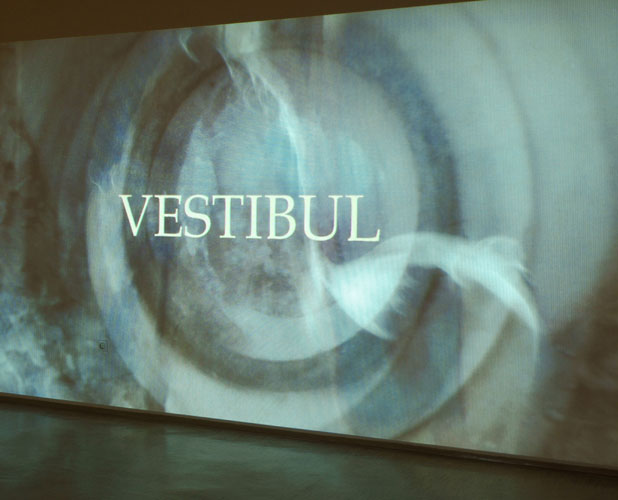 ...
...
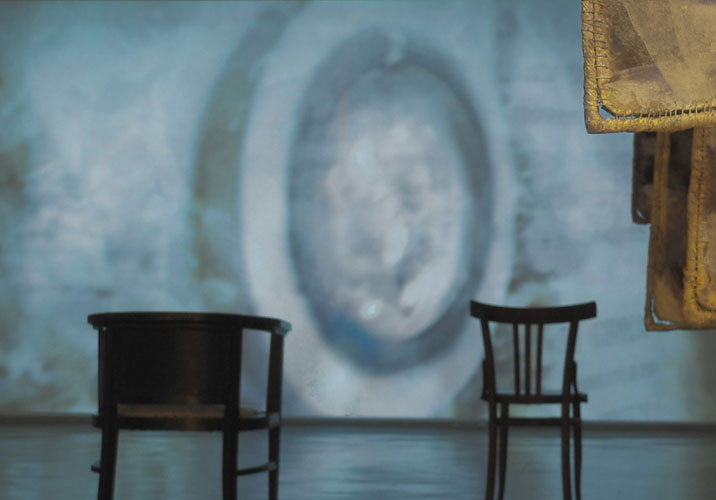 ...
...
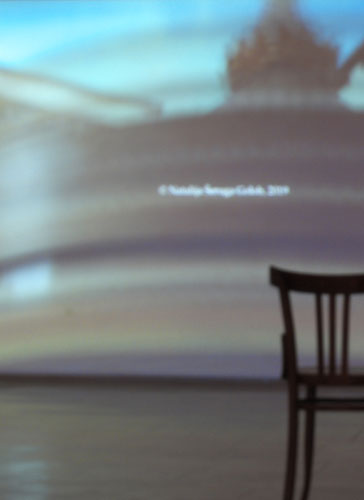 ...
...
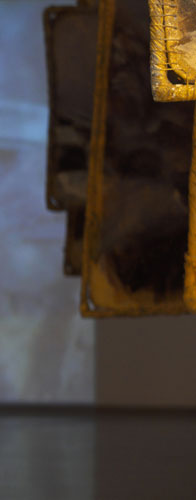 ...
...
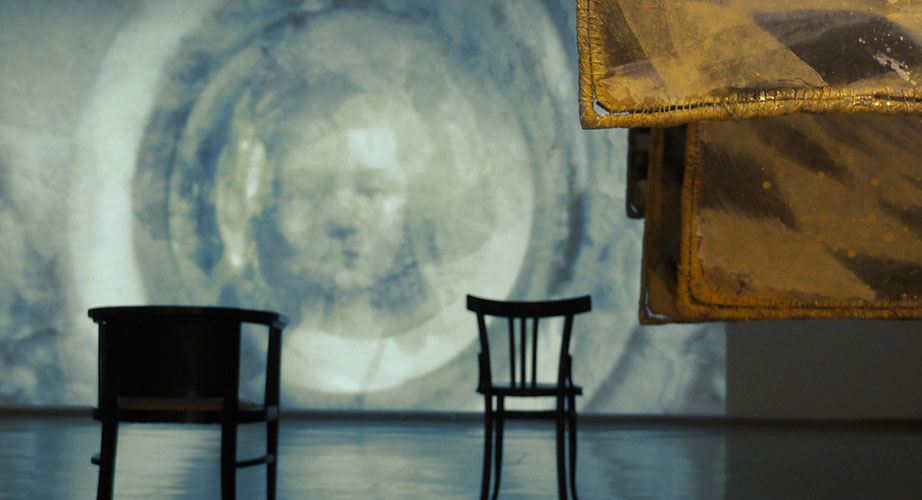 ...
...
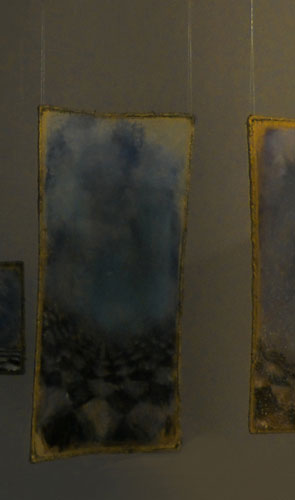 ...
...
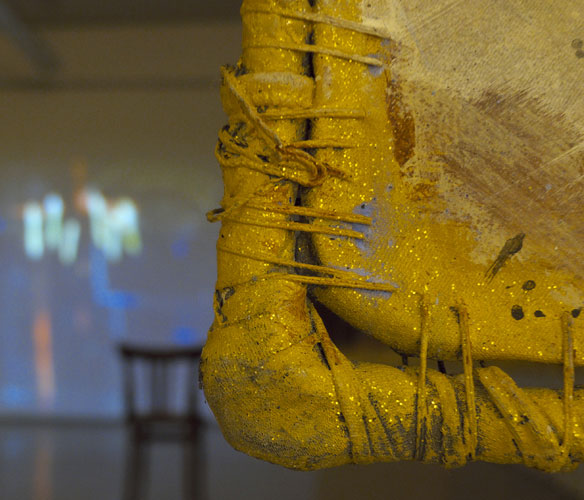 ...
...
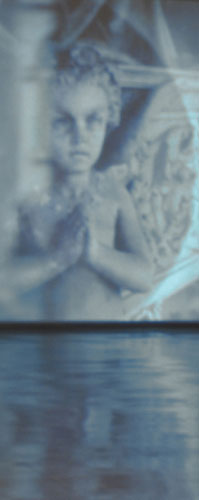 ...
...
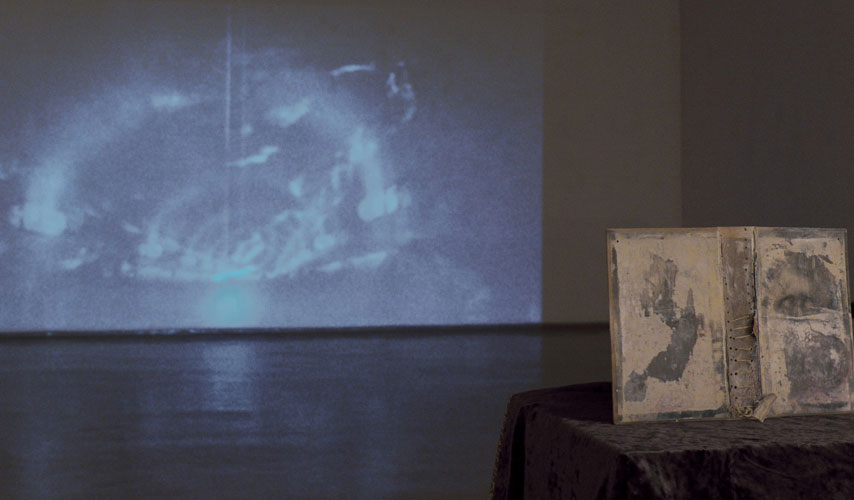 ...
...
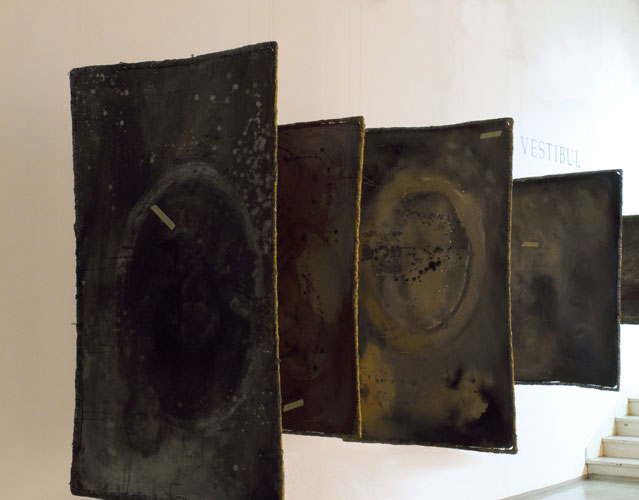 ...
...
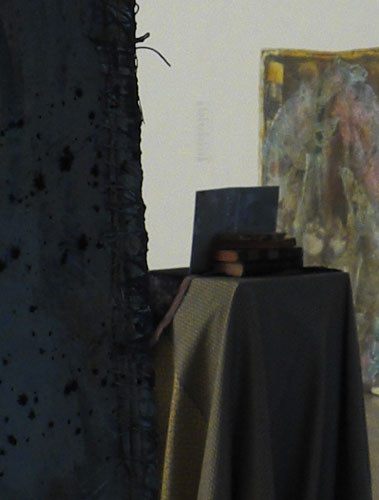 ...
...
